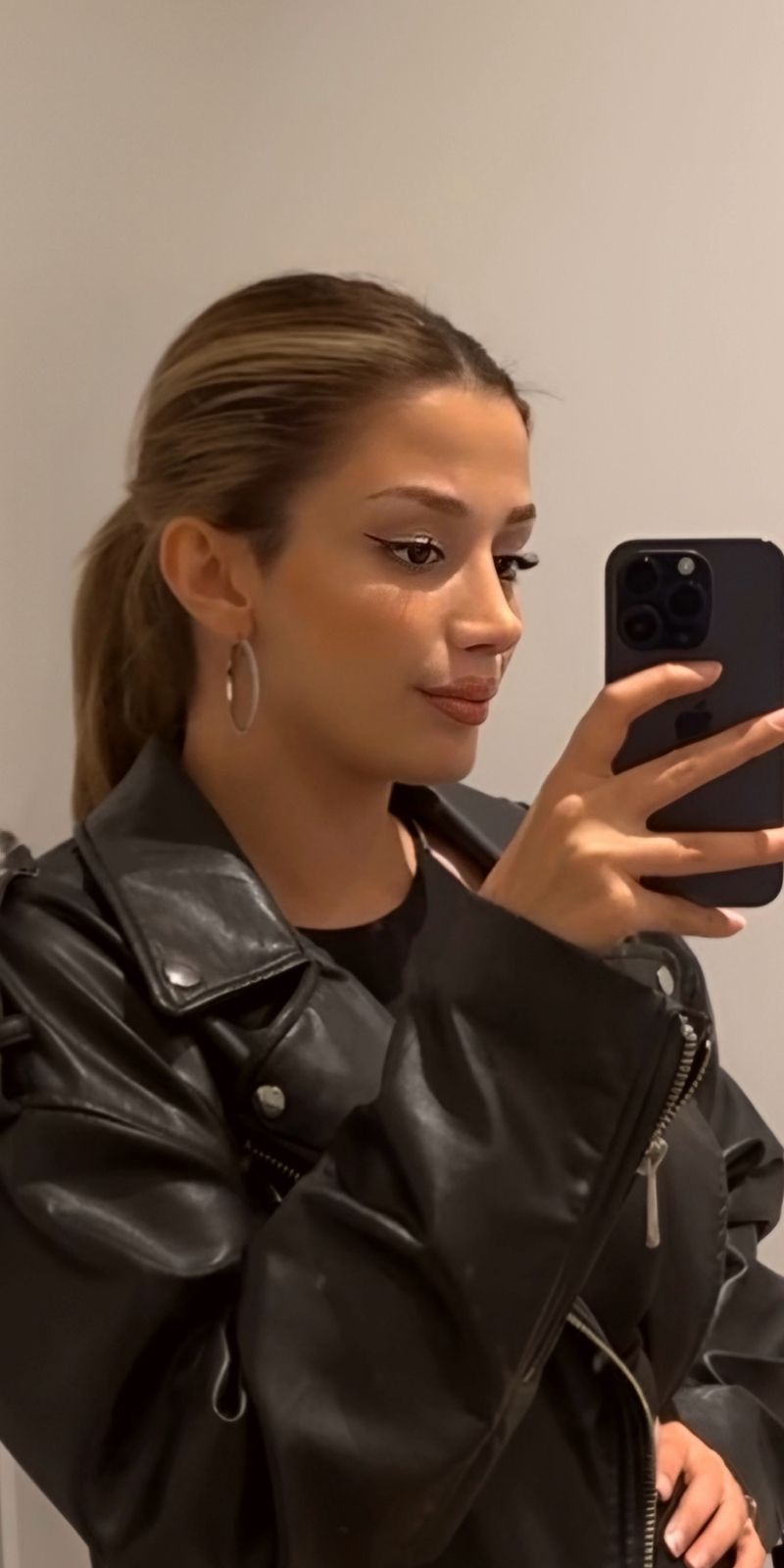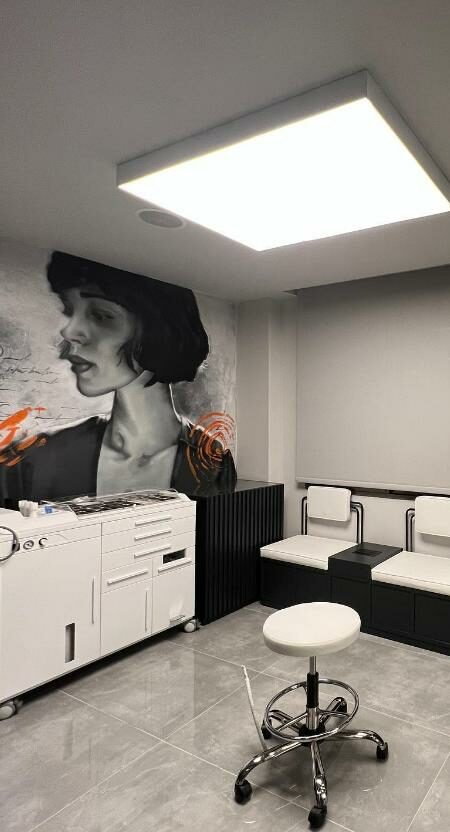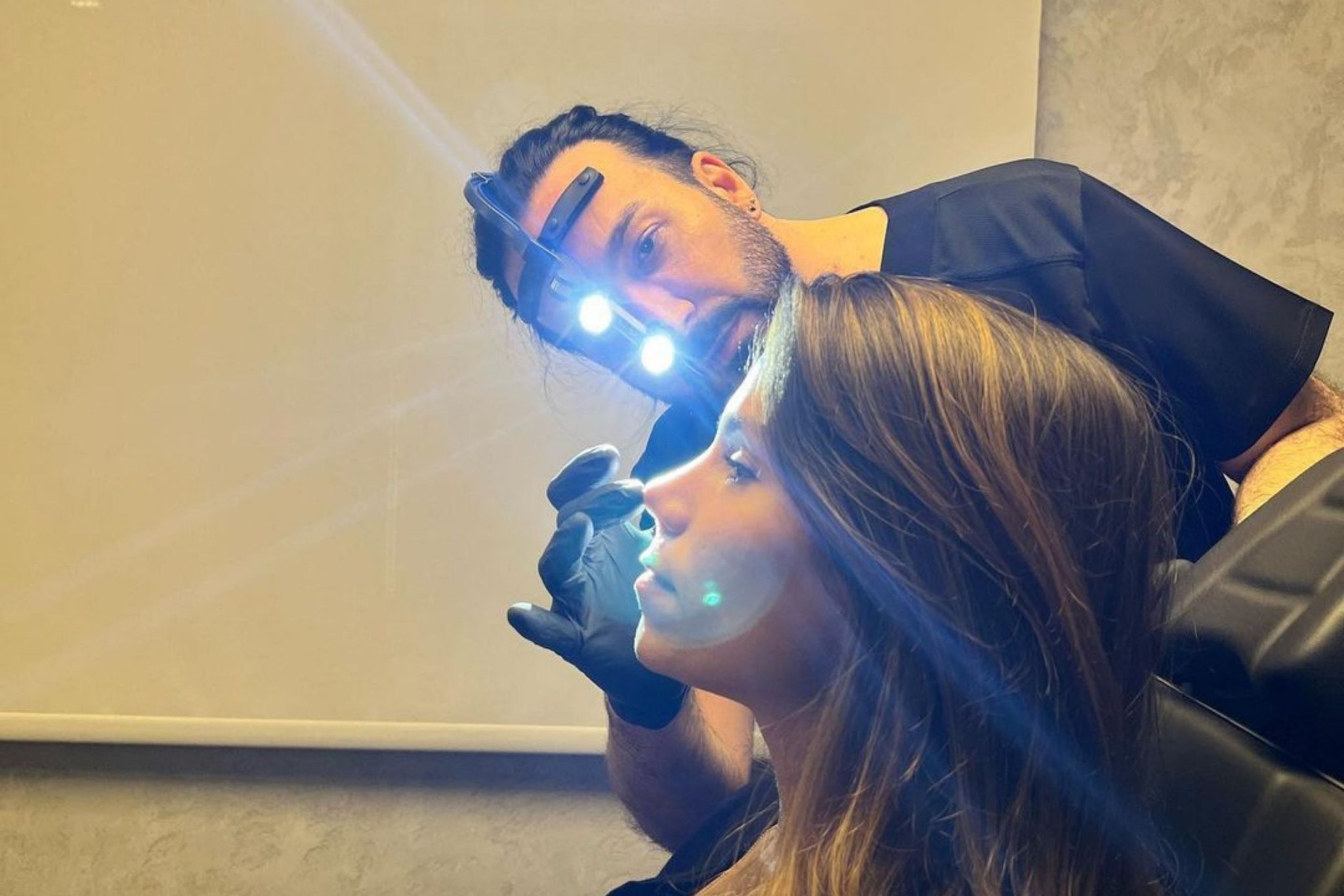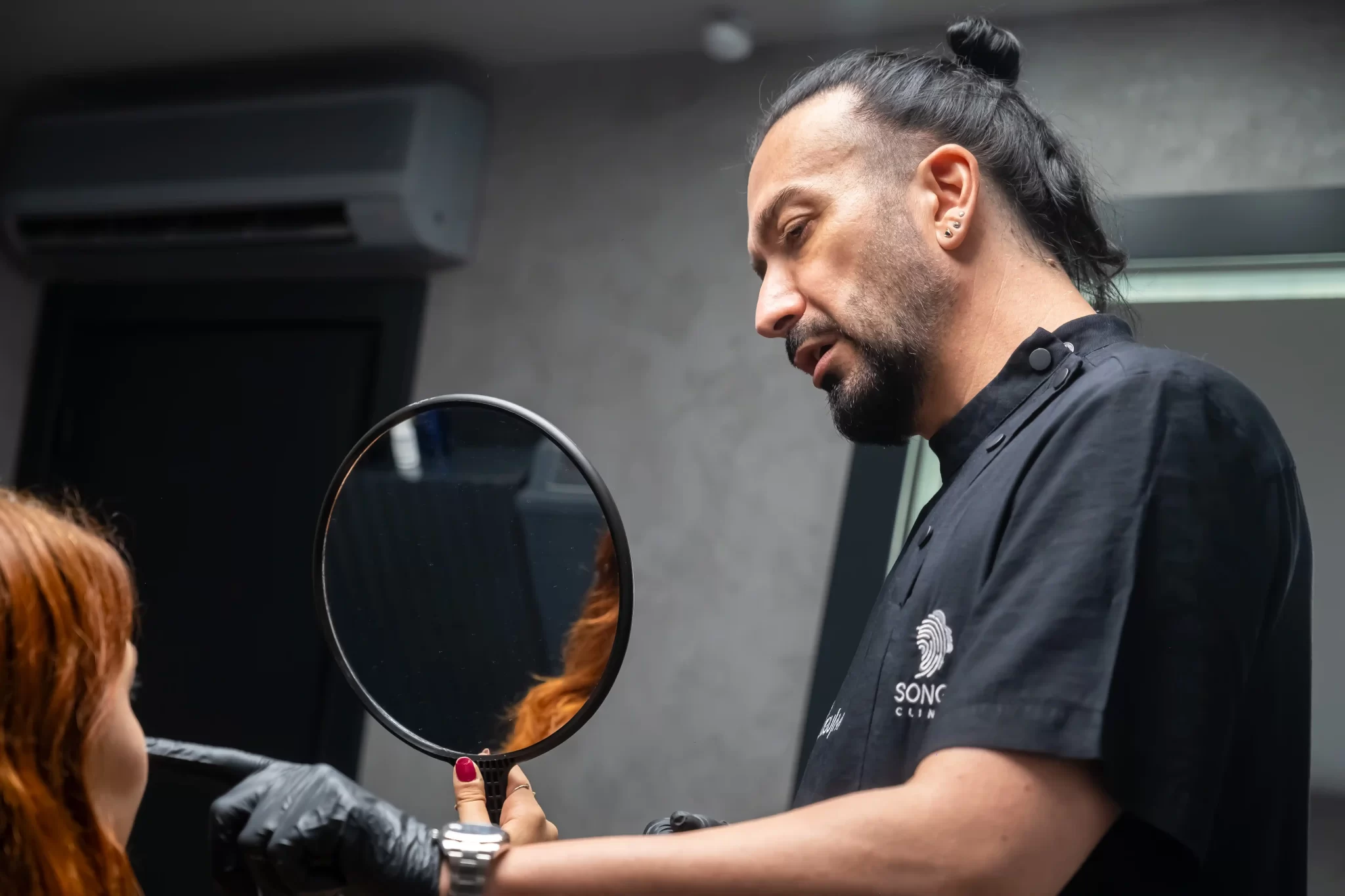







Prof. Dr. Murat Songu is award-winning and recognized as one of the best rhinoplasty surgeons in Turkey. He aims to achieve natural, balanced, and healthy results by thoroughly evaluating each patient’s facial structure, skin type, and breathing functions.
Rhinoplasty surgery not only improves appearance but also corrects breathing problems. Using the open rhinoplasty technique, Prof. Dr. Murat Songu reshapes the internal nasal structures under clear visibility. This approach ensures both aesthetic and functional success.
As an experienced rhinoplasty surgeon, Prof. Dr. Murat Songu prioritizes symmetry, proportion, and a natural look in open technique rhinoplasty. This surgical method enhances tissue control, ensures a safe recovery process, and provides long-lasting results.

+20
Annual Experience

+7000
Rhinoplasty

+20
International Award



Each patient’s nose should be planned according to their individual facial structure. This ensures correct proportions and symmetry. Nose simulators also allow for planning based on the patient’s expectations and facial structure before surgery.

Our patients have their initial contact with patient advisors. If they wish to have a consultation after the initial contact, an appointment is scheduled.
Our patients can gain information about what kind of nose they might have before surgery through nose simulation.
For our patients who decide to undergo surgery, an operation day is determined.
On the day of the surgery, health checks are performed on our patients. After post-operative checks, they can be discharged 2-3 hours later.
We closely monitor our patients’ recovery periods and conduct regular check-ups for one year.



Rhinoplasty is the most common cosmetic surgery performed worldwide for both men and women.
The fundamental requirement for an aesthetic appearance is achieving correct proportions and symmetry. Each patient’s facial structure is different. Therefore, a nose should be planned according to the individual facial structure of each patient.
When the globally accepted aesthetic proportions are harmoniously achieved with your face, your new nose will integrate with your face and gain a natural appearance. This has been my ultimate goal for nearly 20 years.
After rhinoplasty, the patient’s self-confidence increases, and quality of life improves. However, the most significant change is the “rejuvenation illusion” seen especially in patients with long noses. Patients appear at least 10 years younger after surgery.

Revision rhinoplasty is a surgical procedure performed to correct undesirable results from a previous rhinoplasty surgery. This surgical intervention focuses on correcting complications in nose aesthetics and resolving functional issues.
Revision rhinoplasty is a delicate procedure that requires the surgeon’s experience, the patient’s realistic expectations, and proper planning. Preoperative evaluation and careful analysis are crucial for achieving successful results.

Open rhinoplasty is a surgical technique used in rhinoplasty operations. In this technique, a small incision is made between the nostrils to perform the operation. The open technique allows for a broader view and reshaping of the internal structure of the nose.
Open rhinoplasty is used for correcting the shape of the nose, addressing deviations, straightening the nasal bridge, and correcting nasal tip asymmetries. This technique allows the surgeon to have a better view, enabling more precise and detailed procedures.

Functional rhinoplasty is a surgical procedure aimed at improving the functional aspects of the nose. This operation is performed to address issues such as bone deviations and tissue growth that cause nasal congestion.
Functional nasal surgery focuses solely on correcting breathing problems within the nose and does not make any changes to the external appearance. This procedure aims to enable patients to breathe more comfortably and healthily. Functional rhinoplasty is performed by specialist surgeons and is planned and executed according to the individual situation.
Male rhinoplasty is a surgical intervention performed to correct or improve the shape and appearance of the nose in men. This cosmetic operation is often preferred to enhance men’s appearance and self-confidence.
Rhinoplasty surgery can include various corrections such as improving the symmetry of the nasal structure, straightening or reducing the nasal bridge, and defining the shape of the nasal tip.


Non-surgical rhinoplasty is an option that does not require surgical intervention, has low risk, and is cost-effective. This method offers a painless and short recovery period. It can be a reassuring option for those who have concerns about the cost or downtime of a rhinoplasty operation or who have reservations about surgery.
Non-surgical rhinoplasty helps to achieve symmetry in the nose and make it look smaller rather than reducing the size of large noses. This article will explain how non-surgical rhinoplasty is performed, the safety of the procedure, and the conditions for which it is suitable.
Prof. Dr. Murat Songu performs a wide range of nasal procedures, including Ultrasonic Rhinoplasty, Tip Rhinoplasty, Septorhinoplasty, Revision Rhinoplasty, Piezo Rhinoplasty, Open Rhinoplasty, Non-Surgical Nose Job, Ethnic Rhinoplasty, Letdown Rhinoplasty, Preservation Rhinoplasty, Wide Nose Rhinoplasty, Functional Rhinoplasty, Male Rhinoplasty, Septoplasty, Curved Rhinoplasty, Nose Rasping Surgery, and Nose Reduction Surgery, offering both aesthetic and functional solutions tailored to individual patient needs.
Experience in nasal surgery, board certification, patient reviews, and before-and-after photos are essential. The surgeon’s aesthetic sense, ability to balance function with beauty, and clear communication are equally important.
The surgeon examines nasal structure, breathing function, skin thickness, and facial proportions. They also discuss patient expectations to design a surgical plan that addresses both functional and cosmetic needs.
Revision procedures are generally considered after at least 12 months, once healing is complete. The surgeon reassesses nasal structure, identifies residual deformities or functional issues, and tailors a corrective plan.
For thick-skinned noses, structural support techniques are favored, while thin-skinned noses require more delicate refinements. Surgeons may use open or closed approaches depending on facial anatomy and surgical goals.
An experienced surgeon can achieve natural-looking results that harmonize with facial features. A poor choice may lead to unnatural appearance, asymmetry, or persistent breathing problems requiring revision surgery.
Choosing an ENT (Ear, Nose, and Throat) surgeon for rhinoplasty offers significant advantages, especially when functional issues like breathing problems or a deviated septum are involved. ENT surgeons have specialized training in nasal anatomy and airway function, allowing them to address both structural and cosmetic concerns effectively. Their deep understanding of nasal physiology ensures that aesthetic changes do not compromise—and often improve—nasal function, making them a strong choice for comprehensive rhinoplasty care.
Prof. Dr. Murat Songu performs a wide range of nasal procedures, including Ultrasonic Rhinoplasty, Tip Rhinoplasty, Septorhinoplasty, Revision Rhinoplasty, Piezo Rhinoplasty, Open Rhinoplasty, Non-Surgical Nose Job, Ethnic Rhinoplasty, Letdown Rhinoplasty, Preservation Rhinoplasty, Wide Nose Rhinoplasty, Functional Rhinoplasty, Male Rhinoplasty, Septoplasty, Curved Rhinoplasty, Nose Rasping Surgery, and Nose Reduction Surgery, offering both aesthetic and functional solutions tailored to individual patient needs.
Prof. Dr. Murat Songu is considered one of Turkey’s top rhinoplasty surgeons due to his 20+ years of experience and over 7,000 successful procedures. He specializes in both structural and preservation rhinoplasty, ensuring natural aesthetics and functional breathing. His personalized approach, international recognition, and expertise in revision cases further elevate his standing among patients seeking advanced nasal surgery solutions.